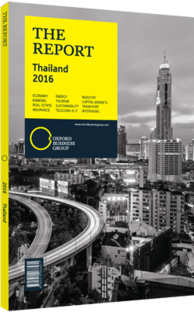Chaipatr Srivisarvacha, CEO, KT ZMICO Securities Company, on economic headwinds and opportunities for ASEAN: Viewpoint

With an uneven economic and financial backdrop, not only for Thailand but also the rest of the world, 2015 was a tough year. The headwinds shaking the Thai stock market as well as economic confidence have included the plunge of oil prices and other commodities; increased geopolitical unrest, particularly in Ukraine and the Middle East; a slowdown of the Chinese economy; disruptive asset price shifts and high volatility in global financial markets; and further appreciation of the greenback as the December rate hike by the US Federal Reserve was anticipated.
Despite the capital outflow from emerging equity markets in the last couple of years, foreign investment seems to have been more resilient during the first quarter of 2016. Moreover, the Stock Exchange of Thailand (SET) Index has also been somewhat buoyant due to local institutional and individual buying forces on the back of optimism over the government’s promises of large infrastructure projects in 2016. Meanwhile, the political situation in Thailand has become more stable with a general election scheduled for the middle of 2017.
On the valuation front, the SET Index is projected to reach 1,570 points by the end of 2016, assuming a price-to-earnings ratio of 15.1 times and 12.4% earnings growth. The main driver is expected to come from domestic economic recovery, with the tourism and construction sectors remaining the investment highlights. Moreover, Thai stocks are attractive in terms of dividend payments, especially ICT and some property stocks. Although uncertainty over commodity prices will remain a negative factor in 2016, we expect less downside risk on oil prices compared to the large drop that was seen in 2014-15.
Regarding the economy, Thailand’s GDP grew only 2.9% during the first nine months of 2015 despite improving from the 0.9% reading in 2014. The below-potential growth rate of the economy calls for stimulus, which is why we have seen a series of short-term stimulus packages launched by the junta since late 2015. Large-scale spending of approximately 2.7% of GDP aimed at low-income earners, small and medium-sized enterprises and the property sector is warranted in order to support domestic demand and economic activities. In 2016, a U-shaped recovery is expected with an estimated 3.2% economic growth rate based on our house view. Public investment and tourism will remain bright in 2016.
Looking beyond, the launch of the ASEAN Economic Community at the end of 2015 is likely to help the group of nations sustain rapid economic growth in the medium term. Nonetheless, more needs to be done with respect to liberalising trade in services and investment, as well as the free movement of workers in the labour market, after the group implemented a zero tax rate for trade in goods in 2010.
Among the ASEAN economies, Myanmar seems likely to be the best performer in terms of economic growth, which is expected to average above 8% from 2015 to 2020, higher than developed nations and catching up with China. Myanmar is the largest non-island landmass within ASEAN borders, with ample natural resources including minerals, oil and gas, a sizable population and low labour costs, along with a high-potential workforce. As a result, it is likely to attract significant global capital inflows. In 2014 foreign direct investment in Myanmar accounted for 5.2% of GDP, an almost 50% increase compared with three years before. Two-thirds of the money flowed into oil and gas and the power sector, with China, Singapore and Hong Kong the top three investors. Thai entrepreneurs, such as SCC, PTTEP, and the CP Group are already investing in Myanmar.
Myanmar’s transformation to a business-friendly regulatory environment and a smooth political transition remains a challenge. However, economic reforms and market liberalisation should pave the way for brighter economic prospects in the medium term.
You have reached the limit of premium articles you can view for free.
Choose from the options below to purchase print or digital editions of our Reports. You can also purchase a website subscription giving you unlimited access to all of our Reports online for 12 months.
If you have already purchased this Report or have a website subscription, please login to continue.

